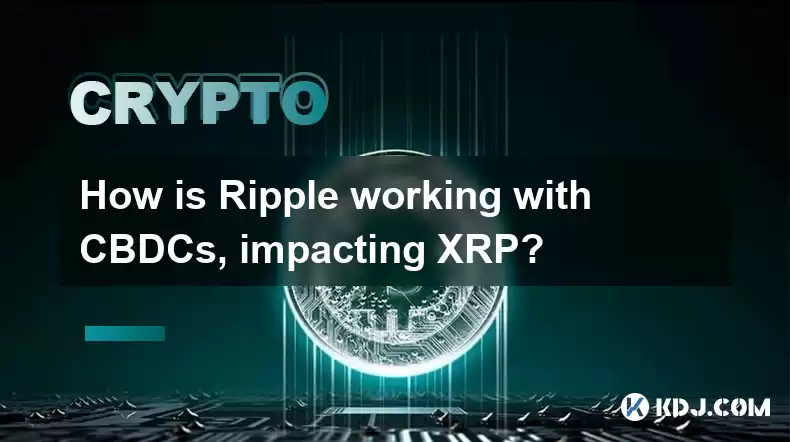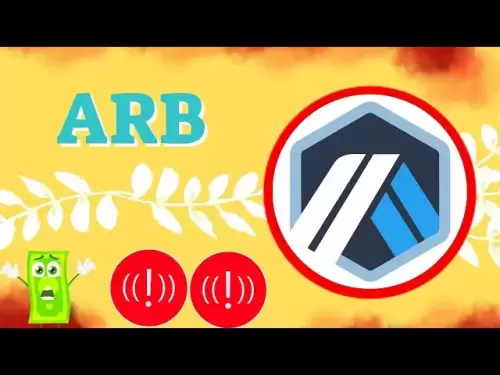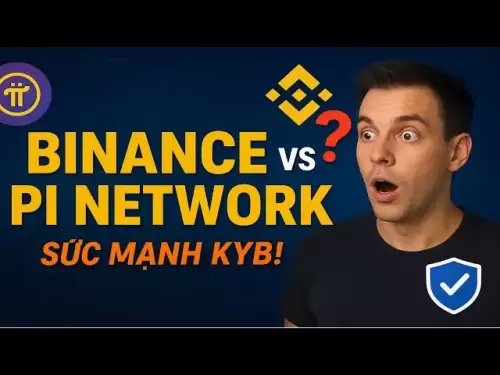-
 Bitcoin
Bitcoin $116800
0.71% -
 Ethereum
Ethereum $4211
6.94% -
 XRP
XRP $3.276
1.68% -
 Tether USDt
Tether USDt $1.000
0.02% -
 BNB
BNB $807.0
3.00% -
 Solana
Solana $180.5
3.24% -
 USDC
USDC $0.9999
0.01% -
 Dogecoin
Dogecoin $0.2406
9.02% -
 TRON
TRON $0.3357
-1.10% -
 Cardano
Cardano $0.8047
3.16% -
 Hyperliquid
Hyperliquid $43.81
7.97% -
 Chainlink
Chainlink $21.08
10.16% -
 Stellar
Stellar $0.4506
1.97% -
 Sui
Sui $3.916
4.69% -
 Bitcoin Cash
Bitcoin Cash $568.3
-1.85% -
 Hedera
Hedera $0.2628
2.48% -
 Avalanche
Avalanche $24.17
4.54% -
 Ethena USDe
Ethena USDe $1.001
0.03% -
 Litecoin
Litecoin $121.4
0.35% -
 Toncoin
Toncoin $3.408
2.28% -
 UNUS SED LEO
UNUS SED LEO $8.978
-0.08% -
 Shiba Inu
Shiba Inu $0.00001376
7.59% -
 Uniswap
Uniswap $10.86
2.94% -
 Polkadot
Polkadot $4.079
5.33% -
 Dai
Dai $1.000
0.02% -
 Pepe
Pepe $0.00001231
10.28% -
 Bitget Token
Bitget Token $4.502
0.79% -
 Cronos
Cronos $0.1576
3.63% -
 Monero
Monero $271.1
0.48% -
 Ethena
Ethena $0.7336
18.38%
How is Ripple working with CBDCs, impacting XRP?
Ripple and central banks collaborate to develop CBDCs, enhancing efficiency, reducing costs, and promoting financial inclusion through technology and partnerships.
Feb 06, 2025 at 12:55 pm

Key Points:
- Ripple's Partnership with Central Banks on CBDCs
- Technical Support for CBDC Implementations
- Integration of XRP into CBDC Systems
- Use Cases for Ripple's CBDC Solutions
- Benefits of Ripple's CBDC Collaboration
- Potential Impact on XRP Value
- Comparison of Ripple's CBDC Offerings to Competitors
Article Body:
Ripple's Partnership with Central Banks on CBDCs
Ripple has established several partnerships with central banks worldwide to explore and develop central bank digital currencies (CBDCs). These partnerships provide Ripple with valuable insights into the regulatory landscape and technical requirements for CBDC implementations. In turn, central banks benefit from Ripple's expertise in blockchain technology and cross-border payments.
Technical Support for CBDC Implementations
Ripple provides technical support to central banks throughout the CBDC development process. This includes assisting with system design, transaction processing, and regulatory compliance. By leveraging Ripple's proprietary blockchain platform, central banks can create highly scalable and secure CBDCs that meet their specific requirements.
Integration of XRP into CBDC Systems
Ripple's XRP can play a pivotal role in CBDC systems by serving as a bridge currency for cross-border transactions. By integrating XRP as a liquidity provider, central banks can streamline international payments, reduce transaction costs, and increase settlement speed.
Use Cases for Ripple's CBDC Solutions
Ripple's CBDC solutions offer a wide range of benefits to central banks. Potential use cases include:
- Facilitating faster and more efficient domestic and cross-border payments
- Enhancing financial inclusion by reaching unbanked populations
- Promoting financial stability by reducing settlement risk
- Improving transparency and accountability in the financial system
Benefits of Ripple's CBDC Collaboration
Ripple's collaborative approach to CBDC development brings several advantages:
- Accelerates the implementation of CBDCs
- Reduces the complexity and cost of CBDC projects
- Enables central banks to leverage Ripple's proven technology
- Contributes to a more innovative and efficient financial system
Potential Impact on XRP Value
The adoption of Ripple's CBDC solutions could have a positive impact on the value of XRP. Increased demand for XRP as a liquidity provider for cross-border transactions could drive up its price. Additionally, Ripple's collaboration with central banks could enhance the legitimacy and credibility of XRP, making it more attractive to investors.
Comparison of Ripple's CBDC Offerings to Competitors
Ripple faces competition from other blockchain companies and traditional financial institutions in the CBDC market. Key competitors include:
- Corda: Features a distributed ledger technology that emphasizes privacy and security
- Hyperledger Fabric: Provides a modular architecture tailored for enterprise-grade blockchain solutions
- Visa: Offers a suite of payment processing services and partnerships with major banks worldwide
- SWIFT: A global interbank messaging network with a strong presence in the international payments market
Ripple distinguishes itself by its focus on cross-border payments and its deep technical expertise in blockchain. By partnering with central banks, Ripple aims to revolutionize the way international payments are processed, leveraging its unique technology to enhance efficiency, reduce costs, and promote financial inclusion.
FAQs:
- What are the benefits of using XRP for CBDCs?
XRP provides fast and low-cost cross-border transactions, enhances liquidity, and increases settlement speed in CBDC systems.
- How does Ripple support central banks in CBDC implementations?
Ripple provides technical expertise, assists with system design, and offers implementation support to central banks embarking on CBDC journeys.
- What is the significance of Ripple's partnerships with central banks?
These partnerships grant Ripple access to regulatory insights, enhance the legitimacy of XRP, and foster collaboration toward innovative CBDC solutions.
- How could Ripple's CBDC offerings impact the financial landscape?
Ripple's CBDC solutions have the potential to streamline payments, enhance financial inclusion, improve transparency, and promote financial stability globally.
- What are the potential risks associated with Ripple's CBDC collaboration?
Dependence on Ripple's technology could create vendor lock-in and potential technological vulnerabilities. Additionally, regulatory uncertainty surrounding CBDCs could impact the viability of Ripple's solutions.
Disclaimer:info@kdj.com
The information provided is not trading advice. kdj.com does not assume any responsibility for any investments made based on the information provided in this article. Cryptocurrencies are highly volatile and it is highly recommended that you invest with caution after thorough research!
If you believe that the content used on this website infringes your copyright, please contact us immediately (info@kdj.com) and we will delete it promptly.
- AI Coin Mania: Dubai Millionaires Eye 20x Gains!
- 2025-08-09 23:10:12
- ChatGPT's Hot Takes: Meme Coins to Buy Now for a Wild 2025!
- 2025-08-09 23:10:12
- Jurassic Park Vibes in Your Pocket: The Colourful Canadian Coin Featuring a Dinosaur Eye
- 2025-08-09 23:50:12
- Altcoins on the Radar: VeChain, Ethereum, and the Shifting Crypto Landscape
- 2025-08-09 23:50:12
- Crypto Airdrops & Opportunities: What's Hot in August 2025
- 2025-08-09 22:30:12
- XRP, Cardano, and the Alluring Alternatives: A 2025 Crypto Landscape
- 2025-08-09 22:35:12
Related knowledge

What is Ethereum’s Slashing mechanism and how to punish malicious behavior?
Feb 20,2025 at 03:08am
Key PointsOverview of slashingDifferent types of slashing in EthereumIncentives and consequences of slashingIdentifying and reporting slashed validato...

What is the verifier node of Ethereum and how to become a verifier?
Feb 19,2025 at 06:00pm
The Verifier Node of Ethereum: A Comprehensive GuideKey Points:What is a Verifier Node?How to Become a Verifier NodeResponsibilities and Rewards of a ...

What is Ethereum’s staking, and how to participate and earn money?
Feb 19,2025 at 04:37pm
Key Points:Understanding Ethereum's Staking MechanismSteps to Participate in StakingBenefits and Rewards of StakingSecurity and Risk ConsiderationsTec...

What is Ethereum’s DAO (Decentralized Autonomous Organization) and how does it work?
Feb 20,2025 at 03:12am
Key PointsDefinition and Structure of a DAOGovernance and Decision-Making in DAOsBenefits and Use Cases of DAOsChallenges and Limitations of DAOsWhat ...

What is Ethereum's multi-signature wallet and how to improve security?
Feb 20,2025 at 02:18pm
Key Points:Understanding the Concept of a Multi-Signature WalletBenefits and Drawbacks of Multisig WalletsRequirements for Setting Up a Multisig Walle...

What is Ethereum's oracle and how to provide data for smart contracts?
Feb 21,2025 at 01:30am
Key Points:Understanding the concept of oracles in EthereumExploring different types of oraclesDetailed guide on how to provide data for smart contrac...

What is Ethereum’s Slashing mechanism and how to punish malicious behavior?
Feb 20,2025 at 03:08am
Key PointsOverview of slashingDifferent types of slashing in EthereumIncentives and consequences of slashingIdentifying and reporting slashed validato...

What is the verifier node of Ethereum and how to become a verifier?
Feb 19,2025 at 06:00pm
The Verifier Node of Ethereum: A Comprehensive GuideKey Points:What is a Verifier Node?How to Become a Verifier NodeResponsibilities and Rewards of a ...

What is Ethereum’s staking, and how to participate and earn money?
Feb 19,2025 at 04:37pm
Key Points:Understanding Ethereum's Staking MechanismSteps to Participate in StakingBenefits and Rewards of StakingSecurity and Risk ConsiderationsTec...

What is Ethereum’s DAO (Decentralized Autonomous Organization) and how does it work?
Feb 20,2025 at 03:12am
Key PointsDefinition and Structure of a DAOGovernance and Decision-Making in DAOsBenefits and Use Cases of DAOsChallenges and Limitations of DAOsWhat ...

What is Ethereum's multi-signature wallet and how to improve security?
Feb 20,2025 at 02:18pm
Key Points:Understanding the Concept of a Multi-Signature WalletBenefits and Drawbacks of Multisig WalletsRequirements for Setting Up a Multisig Walle...

What is Ethereum's oracle and how to provide data for smart contracts?
Feb 21,2025 at 01:30am
Key Points:Understanding the concept of oracles in EthereumExploring different types of oraclesDetailed guide on how to provide data for smart contrac...
See all articles

























































































